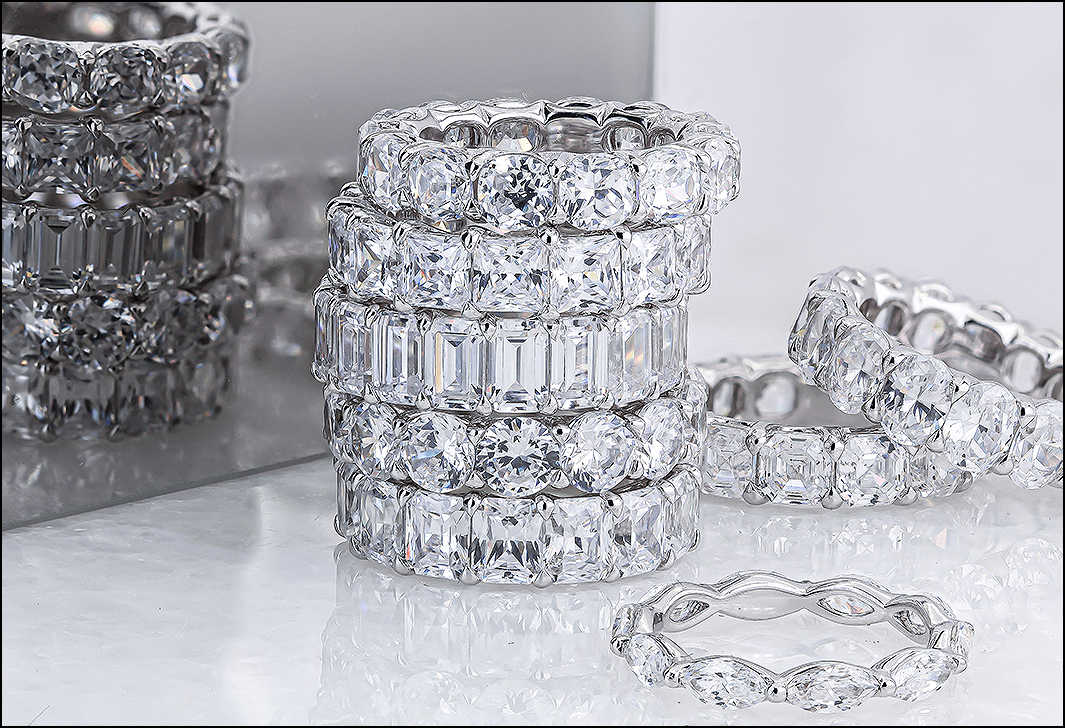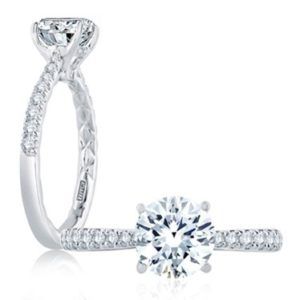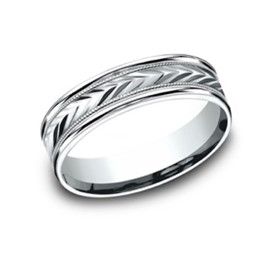Metal Matters: Science Proves Platinum is Better Than Gold
for Your Jewelry Purchase

Choosing platinum is a celebration of beauty, strength, authenticity, and longevity. Not only do these elements factor into the construction of every piece of platinum jewelry, they also reflect a relationship built upon the same traits.
In an effort to once and for all prove the long-supported anecdotal evidence of platinum’s superiority in wear resistance and gem setting security versus that of gold jewelry, Platinum Guild International (PGI) recently released the findings of a three-phase formal independent study conducted by fem Research Institute Precious Metals + Metal Chemistry, in association with TechForm Advanced Casting Technology.
Key conclusions established by the study are two-fold: platinum alloys demonstrate superior wear resistance over white gold alloys with the absolute and relative volume losses of the platinum alloys demonstrating to be lower than that of the gold alloys.

Stackable Platinum Bands by Art Carved
Bench jewelers will most often cite that platinum jewelry pieces that have long been in service are found to be in sound shape without extensive repairs and there is an infrequent need to re-tip platinum prongs versus gold prongs. Platinum shanks do not tend to wear thin and need replacements as often as gold shanks. As platinum is regarded as the best metal to most securely hold a diamond, the study was also conducted to measure the differences in performance of platinum alloys versus gold alloys regarding prong wear.
The entire report and its findings are available here.
Short on time? Simply remember the following three reasons why platinum is superior to white gold:
Platinum is Strong: In fact, it’s much stronger and denser than gold. Platinum is known for its ability to withstand daily wear without thinning. That’s why it’s the industry standard for a diamond’s setting. A Platinum crown ensures that a diamond or gemstone will be held most securely.
 Platinum Wedding Band by Benchmark
Platinum Wedding Band by Benchmark
Platinum’s strength and longevity also make it possible for jewelry to be passed down from generation to generation. Platinum is a popular choice for resetting heirloom jewelry in order to extend the life of a gemstone or turn an antique piece into something new entirely.
Platinum is Naturally White: As a reminder, white gold is actually yellow gold that was mixed with other metals and then plated with rhodium to appear more white—a white mask that will unveil a yellow tinge over time. Platinum, on the other hand, will maintain its naturally white color.
When diamonds are set in platinum, their fire and brilliance are much more evident against platinum’s “true white.” This is what makes platinum the ideal metal for setting diamonds in engagement rings, diamond bands, and other fine jewelry.
Platinum’s true white enhances the appearance of gemstones, too. From rubies to emeralds to sapphires, colored gemstones appear more vibrant when they are secured in platinum.
And lastly…
Platinum is Timeless: Well-loved and well-worn platinum jewelry will develop a satiny finish over time. This change in texture is known as “patina”. Platinum’s patina is celebrated by jewelry lovers and designers because it underscores the metal’s authenticity. All metals scratch, but when platinum is scratched metal moves aside. When gold is scratched tiny bits flake away.

Platinum Engagement Ring by A. Jaffe
Platinum Guild International is dedicated to promoting platinum and its pure, rare and eternal qualities to the consumer and the jewelry trade. PGI has offices in each of the world’s major jewelry markets, providing information, assistance and education on all aspects of platinum jewelry.
For more information, please visit www.platinumjewelry.com.








 Platinum Wedding Band by Benchmark
Platinum Wedding Band by Benchmark


